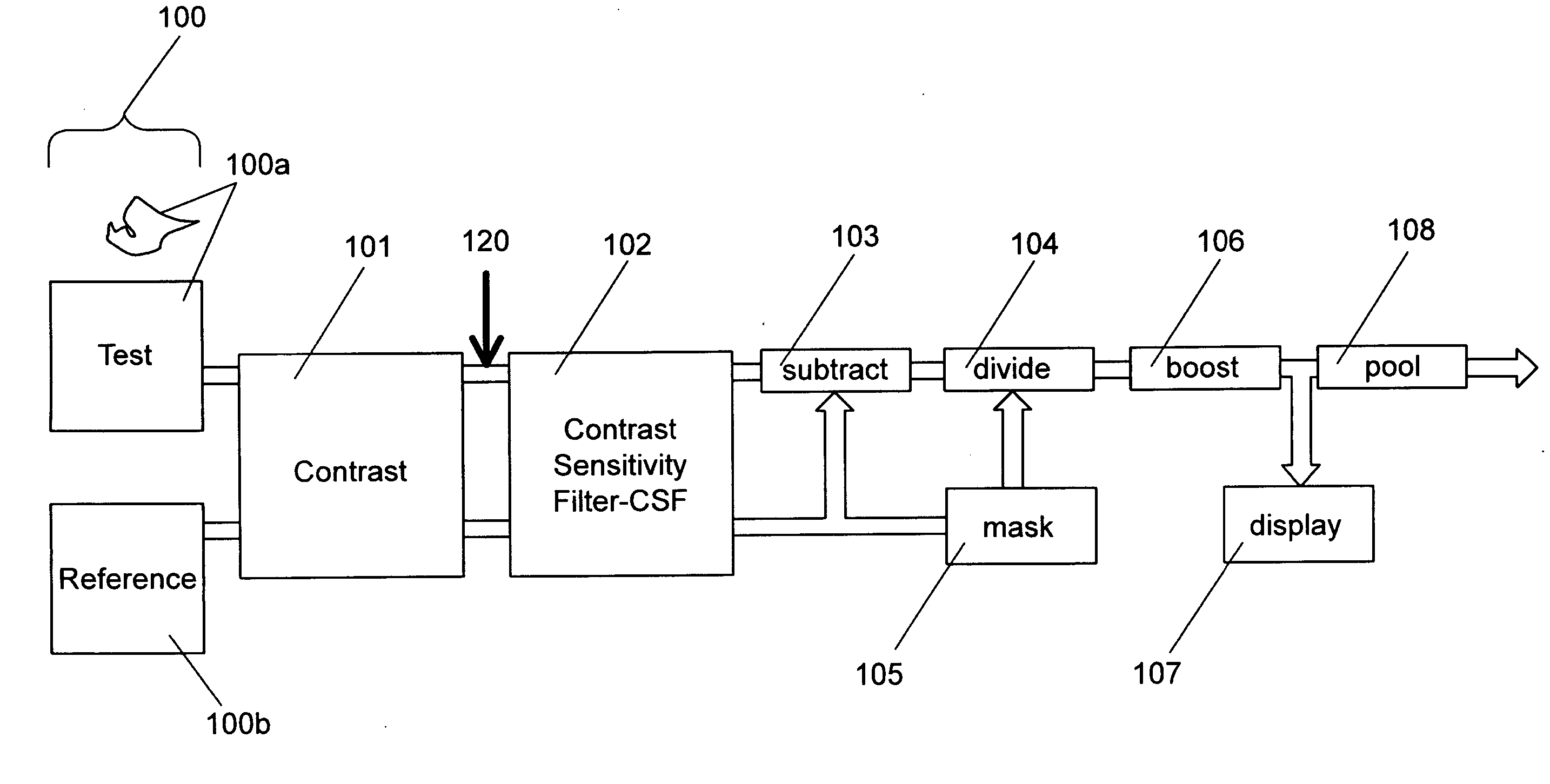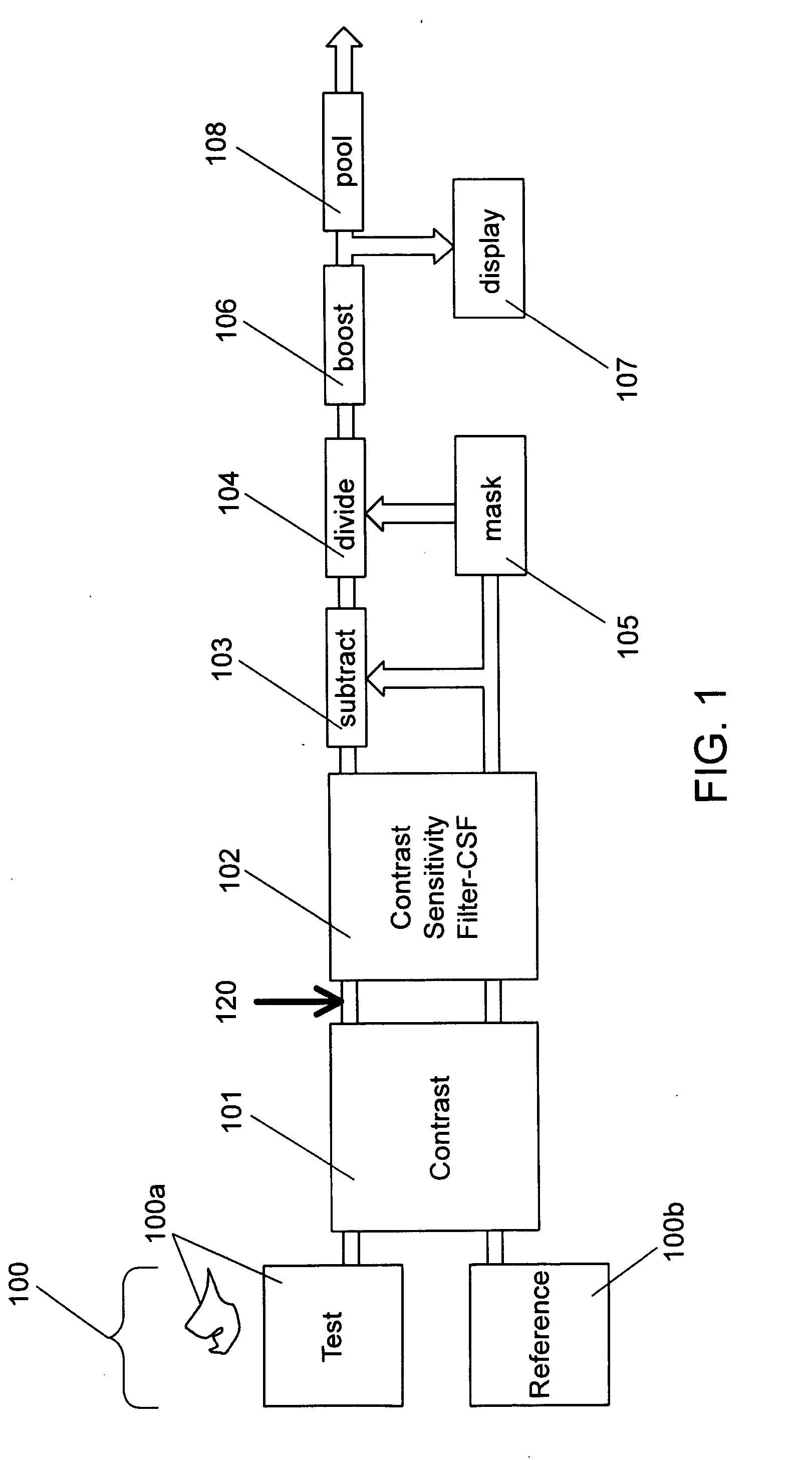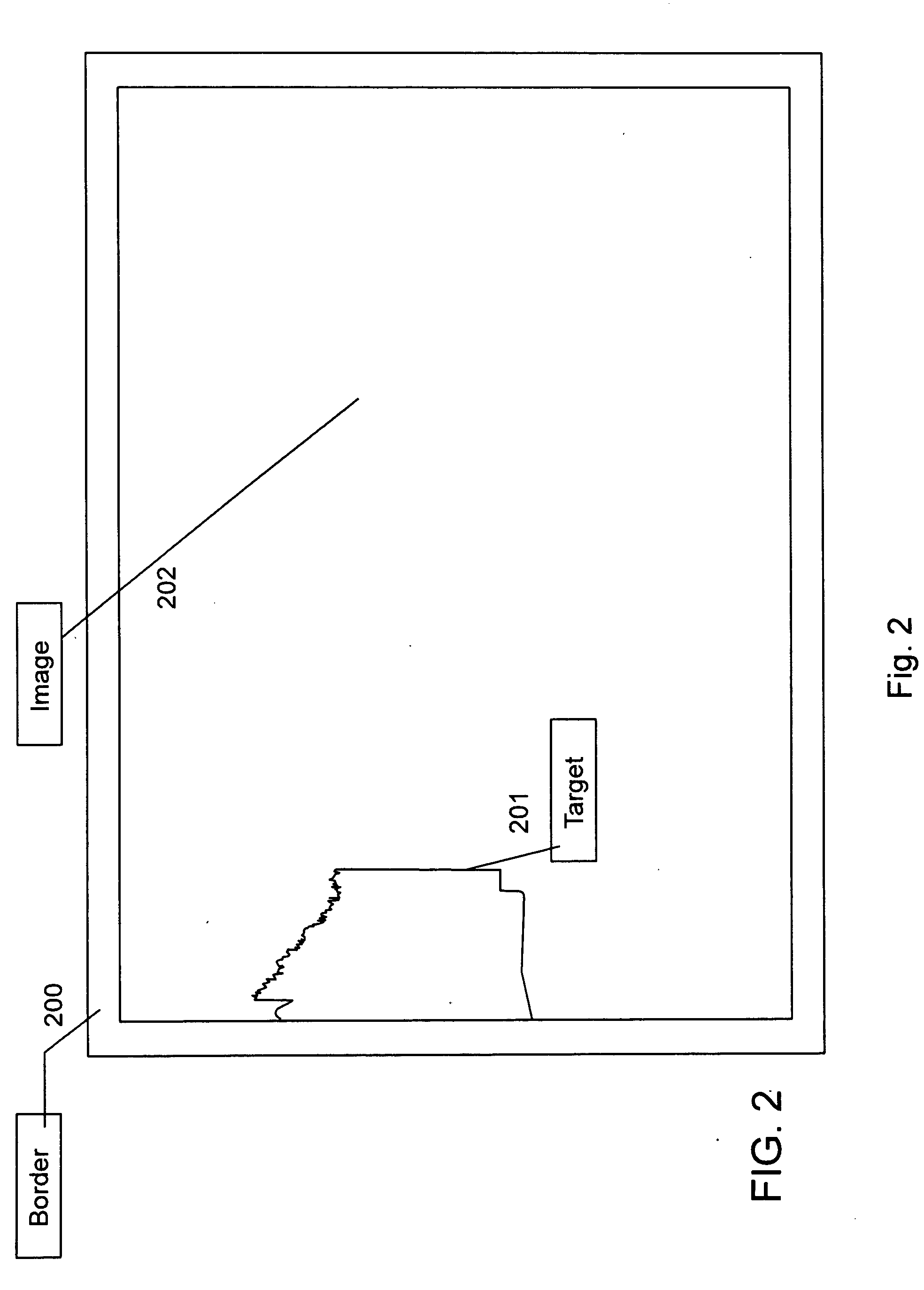Spatial standard observer
a technology of spatial standard and observer, which is applied in the field of spatial standard observer, can solve the problems of difficult use, complex vision process, and only partially understood visibility standards, and achieve the effects of simple and efficient design, accurate visibility metric, and few calculations
- Summary
- Abstract
- Description
- Claims
- Application Information
AI Technical Summary
Benefits of technology
Problems solved by technology
Method used
Image
Examples
Embodiment Construction
[0038] After considering the following description, those skilled in the art will clearly realize that the teachings of the invention can be readily utilized for determining the probable visibility of various graphical or visual depictions and displays as viewed by a typical human observer. In particular, the present invention relates generally to systems and techniques for processing one or more images to produce a single numerical value, or “visibility metric,” indicative of a “Spatial Standard Observer” (SSO). Advantages of the present invention include techniques for the rapid evaluation of the SSO.
[0039] The present invention relates generally to devices and methods for the measurement and / or for the specification of the perceptual intensity of a visual image. Other embodiments relate generally to devices and methods for the measurement and / or for the specification of differences in perception or “perceptual distance” between two or more visual images. Such devices and methods...
PUM
 Login to View More
Login to View More Abstract
Description
Claims
Application Information
 Login to View More
Login to View More - R&D
- Intellectual Property
- Life Sciences
- Materials
- Tech Scout
- Unparalleled Data Quality
- Higher Quality Content
- 60% Fewer Hallucinations
Browse by: Latest US Patents, China's latest patents, Technical Efficacy Thesaurus, Application Domain, Technology Topic, Popular Technical Reports.
© 2025 PatSnap. All rights reserved.Legal|Privacy policy|Modern Slavery Act Transparency Statement|Sitemap|About US| Contact US: help@patsnap.com



